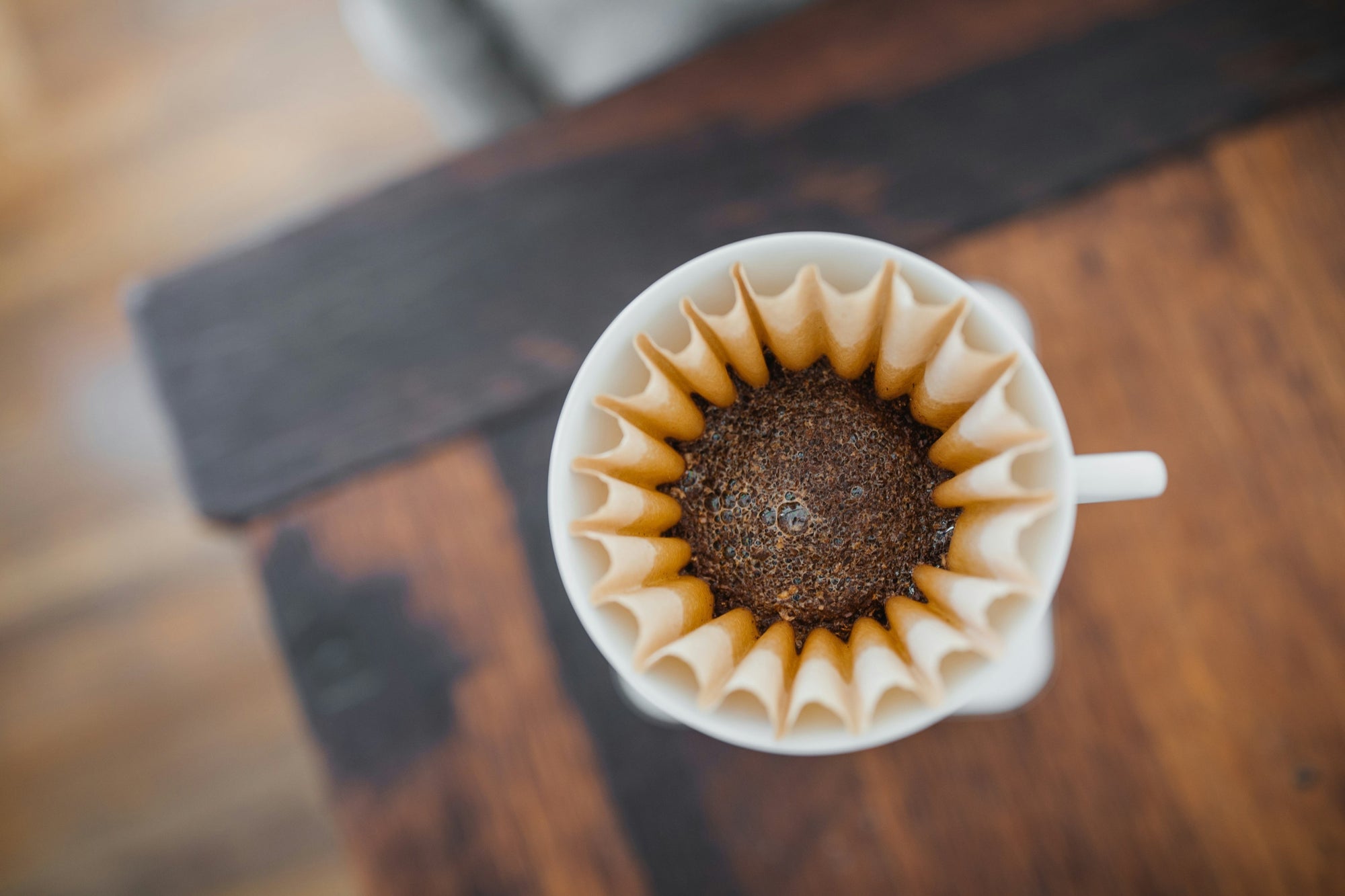

The Best Coffees for Pour Over Brewing
Pour over coffee is highly regarded as brewing method for its simplicity, clean taste, and deep control over brewing variables. But the beauty of pour over brewing lies not only in the method, but in the beans you choose to use.
So what are the best coffees for pour over brewing? We’ll walk through the characteristics of coffee beans that perform best with this method. Whether you're new to manual brewing or have already logged dozens of brews on your V60 or Kalita, you'll find guidance here that helps elevate your cup.
Why Bean Selection Matters in Pour Over Brewing
Pour over brewing is a percolation method: hot water flows through coffee grounds and a paper (or metal) filter, extracting soluble compounds and carrying them into your cup. Unlike immersion methods (like French press or cupping), pour over relies on constant movement and gravity to extract flavors.
This makes it particularly revealing. The clarity and transparency of this brew method can highlight both the best and worst qualities in your coffee. Great beans become transcendent. Mediocre beans become noticeably flat, muddy, or bitter.
That’s why choosing the right coffee is so important. Let’s explore how roast, origin, processing, varietal, and even grind size factor into the perfect pour over experience.
Roast Level: Why Light to Medium Roasts Excel
Roast level directly impacts how flavors express themselves in the cup. While all roast levels can technically be brewed as pour over, some are better suited than others.
Light Roast
- Ideal for pour over
- Preserves the bean’s origin character and terroir
- Emphasizes acidity, floral notes, and fruit clarity
- Less caramelization, so sweetness comes from natural sugars
Medium Roast
- Adds balance and body
- Retains some origin character while boosting sweetness
- Good for chocolaty, nutty, or spiced profiles
Dark Roast
- Generally not recommended for pour over
- Tends to mute nuance and highlight roastiness
- May taste bitter or flat due to overdevelopment
Pro tip: If you’re brewing a high-quality single origin, light and medium roasts will let it sing. Save the darker stuff for immersion brews or milk-based drinks.
Single Origin vs. Blend: Choose Single Origin for Nuance
In pour over, subtlety shines. That’s why single origin coffees are strongly preferred:
- Offer unique regional and farm-level flavor traits
- Let you explore terroir: soil, climate, altitude, and cultivar
- Ideal for showcasing complex fruit, florals, and acidity
Blends are typically designed for consistency, balance, or espresso preparation. They can be delicious, but they often flatten nuance in a pour over.
If you're a beginner, single origins are your best route to discovering what coffee can truly taste like.
Processing Method: Clean, Sweet, or Wild?
How coffee is processed after picking has a massive effect on flavor, clarity, and mouthfeel.
Washed Process (Wet Processed)
- Most recommended for pour over
- Clean, crisp flavors with bright acidity
- Ideal for clarity and subtle tasting notes
- Common in Ethiopia, Kenya, Guatemala, Colombia
Honey Process
- Semi-washed method with some fruit mucilage left on
- Adds sweetness and syrupy texture
- Balanced between washed and natural
- Common in Costa Rica, El Salvador, and Nicaragua
Natural Process (Dry Processed)
- Whole cherries are dried before de-pulping
- Results in bold fruitiness, heavy body, wine-like flavors
- Can be stunning in pour over but requires precise brewing
- Best for adventurous palates
For beginners, start with washed or honey coffees for easier dialing in. Intermediates may love the expressive challenge of naturals.
Coffee Varietals That Shine in Pour Over
A coffee's varietal is its genetic cultivar—much like grape varieties in wine. Some varietals are prized for their unique cup profiles, and pour over is an ideal method for exploring these differences.
Top Pour Over-Friendly Varietals:
- Gesha (or Geisha): Legendary for floral, tea-like elegance; jasmine, bergamot, peach
- SL28 / SL34: Kenyan classics with bright acidity and blackcurrant tones
- Ethiopian Heirloom / Landrace: Wild, floral, citrusy, complex
- Pink Bourbon: Unique hybrid known for layered florals and candy-like sweetness
- Pacamara: Big-bodied hybrid with both clarity and depth
- Bourbon & Typica: Classic varietals with balanced sweetness and structure
When you see these on a bag, they’re worth a try—especially in pour over.
Tasting Notes to Look For
Pour over coffee tends to highlight certain tasting notes better than others. Look for coffees described with:
- Bright fruit (citrus, stone fruit, berry)
- Florals (jasmine, rose, chamomile)
- Honey, brown sugar, or cane sugar sweetness
- Delicate cocoa or tea-like finishes
These flavors will be more apparent when brewed as pour over than with immersion or press methods.
Grind Size: Finding the Sweet Spot
Grind size is critical in pour over brewing. It affects flow rate, extraction time, and ultimately flavor.
Target Grind:
- Medium-fine, similar to table salt
- Too fine = slow drawdown, over-extraction, bitterness
- Too coarse = fast flow, under-extraction, sourness
Use a burr grinder for consistency. Blade grinders create uneven particles, making it hard to brew repeatable, balanced cups.
Water Quality and Temperature
Since pour over uses only water and coffee, your water quality matters. Aim for:
- Filtered or spring water (avoid distilled or hard tap water)
- Brewing temperature: 195°F to 205°F (90.5–96.1°C)
Higher temperatures = more extraction. If you're working with light roasts, a slightly hotter brew may help unlock sweetness.
Brewing Gear That Complements Great Beans
To get the most from your pour over beans, use gear that helps with precision:
- Gooseneck kettle for controlled pouring
- Scale with timer for consistency
- Hario V60, Kalita Wave, Origami, or Chemex for different drawdown characteristics
- High-quality filters (bleached paper for clarity; cloth or metal for more oils)
Coffees to Try First
If you want to explore top-tier pour over coffees, start with:
- Washed Ethiopian Yirgacheffe (floral, citrus, tea-like)
- Honey-processed Costa Rican (balanced, sweet, stone fruit)
- SL28 Kenyan (juicy, bright, blackcurrant)
- Colombian Pink Bourbon (sweet, layered, tropical)
- Gesha from Panama or Colombia (jasmine, bergamot, lemongrass)
Each of these has distinct characteristics that sing through pour over brewing.
Podium Coffee Club: Beans That Belong on the Brewer
At Podium Coffee Club, we specialize in champion-grade coffees that perform beautifully in pour over. Every month, we feature beans from roasters who have stood on the podium at national coffee competitions—the top 1% of roasters in the U.S.
Our coffees are fresh-roasted and ship within 24 hours, meaning you’re always working with beans at peak flavor. Whether you're exploring SL28, Pink Bourbon, or an exquisitely washed heirloom, our curation does the hard work—you just bring the kettle.
Final Pour
If you're serious about enjoying pour over coffee, investing in high-quality beans is non-negotiable. Focus on light-to-medium roasts, single origins, washed or honey processing, and varietals known for expressive clarity.
Pour over is a method that rewards curiosity and celebrates nuance. With the right coffee, your morning ritual becomes more than just caffeine—it becomes a journey into the soul of a bean.
Brew slow. Taste deeply. And let every cup surprise you.




